The WTCPL uses the same soldering pencil as the WTCPT, which I inherited some time ago, and Weller (now part of Cooper) still makes new replacement parts and tips for these old workhorses, which I think is fantastic.
Anyway, you'll find the datasheet for your model here, including troubleshooting guide, assembly diagram and parts list:
Weller Tech Sheet - WTCPL Series
In my case the magnetic switch was still working (there's instructions on how to test each part) but the heater barrel was open. I replaced the barrel and the nut (the newer barrels are slightly larger in diameter, so you might as well get a barrel nut at the same time) and the iron works perfectly.
You can get these parts from Digikey:
EC234-ND - HEATER ASSY FOR A TC201T IRON
BA60-ND - ASSY BARREL NUT FOR PES51&50
SW60-ND - SWITCH ASSM FOR SOLD PENCIL (magnetic heater switch)
Some are listed as zero quantity, but they order them and I got mine in about 2 weeks. Other replacement parts are available, but if you have to replace too much (or the more expensive parts) on the iron you might as well buy a new iron. When mine broke, I fixed it and purchased a new one that was adjustable for $100. Now my old one is the backup, and I don't mind bringing it to electronics group meetings.
However, this is a worthwhile iron to fix if the cost is not too great. The new fancier models have more features, but you really can't beat how durable and usable these old wellers are. While you're at it, you might as well get another tip or two.
Not affiliated with digikey, but they are a reasonable online supplier if you are in North America
